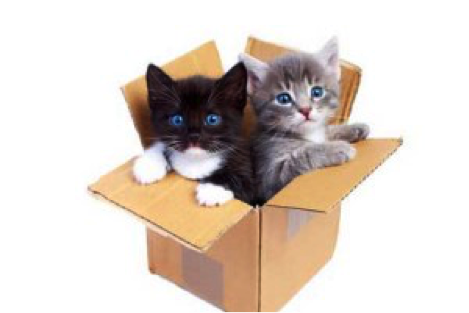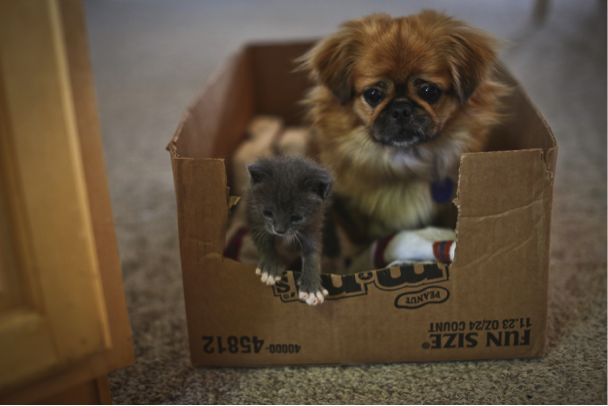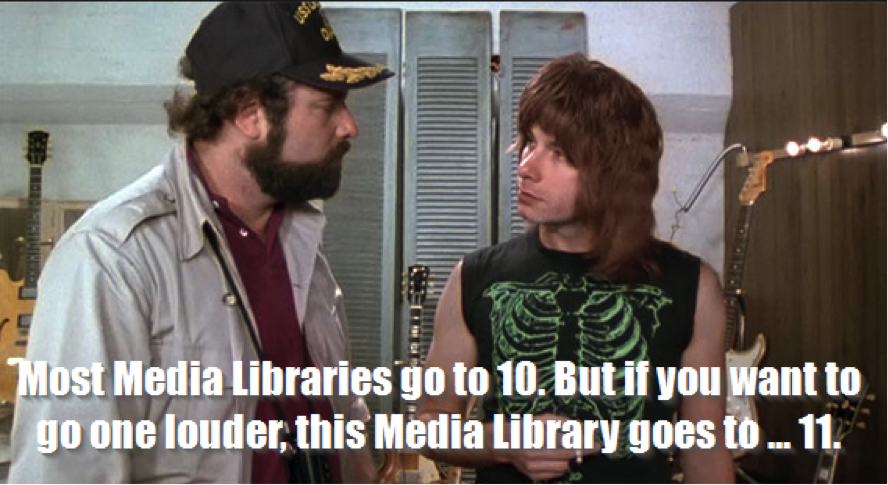Best Practices in WordPress: Image Management
I wouldn’t be surprised if most WordPress users imagine their Media Library as being no different than a teenagers closet: A giant pile of disorganization, a haystack housing thousands of needles. You might have said, “Why doesn’t my Media Library use folders like everything else in my digital life?” There are many reasons, but properly adjusting yourself to use the Media Library will improve your workflow and make your website more searchable and accessible.
If you are like me, on your work computer you have file cabinets and a folder structure that you’ve organized for your exact workflow. It’s intuitive (to you), clean, and organized. You’re confident that if a total stranger walked into your office, you could ask them to find a file on your computer, and they’d know exactly where to find it.
Then, you come home and you couldn’t find the deed to your home if your life depended on it. Sheesh! It’s a mess. Sometimes you wish you could just say the words “house deed” and it would glow or tweet to give you a clue as to its location.
A simple Google search for “digital file management” will reveal articles mostly focused on managing your media just like your home file structure, naturally, with folders. The folder management system is probably as old as paper itself. It’s so ubiquitous as a system that computer operating systems adopted it as well. Whether it’s Linux, Mac, or PC (even in your Outlook mailbox), everything is ordered with folders.
So why would WordPress choose to display your media without folders? This appears to be an obvious oversight. But it’s not. Here’s why.
Why You Don’t Actually Want Folders in Your Media Library
Despite the fact that you’re very familiar with folders, they are not optimal for organizing your media in WordPress. Primarily because media files are neither taxes nor bills. They are reusable items with the purpose of enhancing your content.
You see, taxes and bills have specific dates and timelines, and you need to use them according to those dates and timelines. The same is not true of media. Once you upload a media item, it’s available for any and every post or page you create. Just because it’s currently attached to your latest post “Cats in boxes” doesn’t mean you can’t insert it into “Even more cats in boxes” in the future.
Folders are hierarchical, meaning they have parents and children. This hierarchy effectively silos your images into a singular route of discovery. If that one route isn’t exactly clear, you could end up navigating through a lot of folders just to find the one you need.
Let’s use “Cats in boxes” as an example. Let’s say you have a root folder called “Cats”, with a sub-folder called “in boxes”. It is clear that your image of cats in boxes should go in the “in boxes” sub-folder.
That’s fine for an image like this:
But what about an image like this?
Not only do you a have folder for “in boxes”, you also have “kittens”, and inside “kittens” you also have “black” and “grey”. So if the grey and black kittens in boxes image is inside the “in boxes” sub-folder, and you’re thinking of “that one with the kittens in the box”, then you’ll probably be in luck.
But, if you originally used this image because of the cute black kitten and filed it under “Cats > kittens > black” instead, then when you’re looking for it under “in boxes”, you’re out of luck. And don’t even get me started on the nightmare folders would be for this image:
Why Search is Better than Folders
So, the issue of organizing media in folders should be clear. But you’re still not convinced about search, because “everything else is with folders, why isn’t WordPress?” Let’s destroy that myth right now with a short history of the evolution of email.
Since the start of the digital era, email has been dominated by Outlook. Outlook loved (and still loves) folders. Even it’s closest rival, AOL, loved folders. Yahoo loved folders too. But did you ever try to find that ONE email in your folders? That is IF you even filed it manually and correctly.
Then, something revolutionary happened that we take for granted today: Gmail. Gmail basically said “Folder!? Forget about that!” Gmail launched with huge fanfare. Once everyone was on board, there was some immediate confusion – where were all the folders? Gmail purposely launched without folders and never planned on implementing them. Why? Because search is better.
But why is search better? The answer is in how you remember emails. By their associated “project”, or by the name of the person who sent it, possibly combined with some key words they said in the email? I’d be willing to venture it’s most likely the latter.
Remember that closet analogy I mentioned above? That’s Gmail. With the advantage that (yes, it’s an advantage) the teenager can say “Red striped pullover” and it glows and hovers out of the pile, perhaps with a couple of similar items, for the teen to grab and go. That’s the power of search in both Gmail and in the WordPress Media Library.
OK, How Do I Make My Media Glow?
Getting your Media Library from its current state to the glowing-and-floating selection magic will take a bit of time and effort. But it’s worth it. Here’s what you need to start doing today:
Never Upload a DSC456.jpg ever again
Before you upload a file make sure it’s ready to be uploaded. There’s a lot that can be done with your images before you even upload them at all, but right now I’m just talking about the actual filename. Give your file a descriptive filename.
WordPress’ media search finds images primarily by their title. The title of a media file is generated off of the filename. So, renaming the file before uploading let’s you skip having to rename the title.
Even better, your images are a great source of SEO-mojo.
Your images will be ranked higher by search engines if their filenames are similar or identical to the keywords used in the search query.
. A descriptive filename benefits both your WordPress Media search and your Google search results.
Besides the title, the Media Library actually has one other area to search: the “attached to” data. Essentially, when you upload an image via the “Add Media” button in a post or page, WordPress adds the name of that post or page to the “metadata” of that image. In the Media Library, you can sort by that column to find the image you’re looking for.
Don’t Stop with Search
While uploading, make sure that you are also giving each image a unique and descriptive alt text. Google also pays attention to this information and it’s the information that will be read out loud to any one visiting your site with a screen reader. Making the alt text a literal description of the image (in a complete and readable sentence) is both beneficial for accessibility reasons and for search engine algorithms.
This Media Library Goes to “11”
Now that we understand why WordPress organizes the Media Library the way it does, let’s take it to the next level. Rather than hacking it to behave in ways it wasn’t meant to behave (i.e. put folders in the Media Library), let’s take the core concepts of WordPress and apply them to the Media Library to make search and the results even better.
We’ll start with several really useful plugins.
This is the must-have plugin in my toolbox. While we’ve only talked about search, WordPress also supports at categories and tags. Enhanced Media Library (EML) takes the core concept of categories and tags and applies them to your media.
This means that, in addition to search, you can filter your media by any schema you’d like. We use this on both our WordImpress.com and GiveWP.com sites. Both sites have a growing catalogue of products that necessitate a variety of display media. We use EML to filter our media by “Product” and “Type”.
For example, our Recurring Donations add-on for GiveWP.com is a “Product”. Using EML, we can filter by product and quickly see only the media that relates to Recurring Donations. But we can additionally filter by “Type”. For us, “Type” means “Product Images”, “Documentation”, “Support Issues”, or “Blog”. Filtering by “Recurring Donations” and then “Documentation” displays only the images we use for documentation of that product.
I can’t recommend Enhanced Media Library enough. It’s essential for any site you’re working on.
I mentioned earlier the importance of giving your images a descriptive alt text. It’s really a shame that WordPress’ Media search doesn’t search the alt text when providing its results, but this plugin makes it happen.
Media Search Enhanced allows you to search your media by title, alt text, description, caption, and file name. This plugin should be incorporated into WordPress Core. Highly recommended.
The Folders are Dead! Long Live the Folders!
Occasionally, there are good reasons to use folders instead of search. After all, if you use any of the many plugins that enable folders in the Media Library, you will still be able to search. I however hope that, in light of this article, you need a much more compelling reason for folders than mere habit or familiarity.
There are many exciting trends in WordPress that could benefit the Media Library in the near future. The ability to search via the REST API could produce lightning quick search results. The Core team has also said several times that improving the overall performance of the WordPress Admin interface is a priority for the next few releases.
If you love the Media Library but want to see it improved even more, there are lots of ways to get involved in the process. Don’t bemoan your folder-less existence – join a Meetup, or the Slack channel, and contribute!









